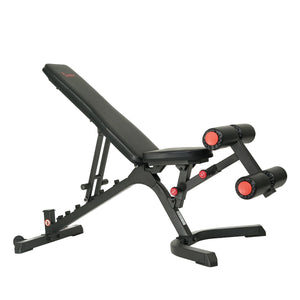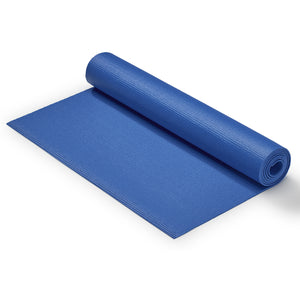In tribute to our favorite month, Step-tember, we’re honoring all of our walkers and steppers out there by providing you with expert advice on how to improve and spice up your routine. First on deck: strength and recovery techniques for walkers!
Walking is a full-body exercise that burns calories and increases your cardiovascular fitness. Just by walking you engage your quads, hamstrings, glutes, core, calves, arms, and shoulders; but many other muscles play a supporting role in keeping you up and moving.
Walkers who implement a strength routine are stronger, less prone to injury, and simply put, move better. Below, I’ve listed 5 of the most common problem areas for walkers, along with strength exercises and recovery techniques all walkers should be doing to prevent injury, increase mobility, and perform their best!
Before we dive in, I’d like to note walking and running are very similar movements, and any of these exercises would be a great addition to a running routine as well. Since running places even more stress than walking on the body, I would highly recommend these exercises for runners.
Ankle
Ankle weakness is very common in walkers, and particularly a concern because it’s such a small joint that we heavily depend on for balance. Weak muscles in the surrounding tibialis anterior/posterior, peroneals, as well as soleus and gastrocnemius can lead to shin splints, plantar fasciitis, as well as other overuse injuries. Strengthening the ankle area will improve your stride and reinforce your balance so you’re prepared for even the toughest terrain.
Exercises:
- Ankle circles (10 x each direction)
- Walk on toes (2x10 meters)
- Walk on heels (2x10 meters)
Tight muscles in the calf and foot can also contribute to shin splints, plantar fasciitis, as well as other overuse injuries. It’s very important for walkers to include basic flexibility techniques to improve their recovery outcomes and avoid these nagging injuries.
Recovery:
- Tennis ball roll out (2x 30-120 sec each side)
- Calf stretch (2x 30-60 sec each side)
Knee
Have you ever heard of runner’s knee? Unfortunately, runners aren’t the only people subject to this unwelcome pain, it’s very common in walkers as well. There are a few things in particular walkers should keep in mind when attempting to minimize knee pain.
First, you should focus on having a softer, quieter step. A lighter step will minimize pounding and decrease jarring of joints. Next time you walk, pay attention to the sound of your steps, and work on keeping them as light as possible.
Second, incorrect knee tracking is very common amongst walkers. If your knees point outward or inward rather than straight ahead, this can generate a lot of pain especially for regular walkers or runners and can create a lot of problems and pains up and down the chain from the knee. To improve your knee tracking, I recommend strengthening both your knee, and hip area. The exercises are chosen to help not only strengthen but train your muscles to maximize proper knee and hip angle throughout your walk.
Exercises:
- Walking lunges (2x12 each side)
- Bench squat (2x12)
- Lateral band walks (2x12 each side)
Tight quads or hamstrings can contribute to knee pain, IT Band Syndrome, and other overuse injuries. All walkers should implement these stretching techniques at a minimum to increase flexibility and mobility throughout the thigh.
Recovery:
- 4 Way Quad Roll (2x 30-120 sec each side)
- Half Split (2x 30-60 sec each side)
Hip (Pelvic Angle)
A proper pelvic tilt is essential for correct walking form. Imagine your pelvis as a cereal bowl, if it tilts too far forward or back, milk will spill out. The aim should be to keep all the milk in your bowl - or your pelvis in a neutral position. You can practice this by standing and tightening your glutes and core to draw your pelvis forward - this is a neutral position. You can think about it as you walk by leading with your hips. Remember your glutes and core should be engaged to keep you in this position.
Strengthening your core and glutes can help prepare those specific muscles to work to your advantage throughout your walk. A solid pelvic angle can help set your knee, ankle, and foot up for the best tracking and placement through each step, so taking the time and effort to nail your pelvic angle is totally worth it!
The following exercises were designed with the specific activations you’ll want to perform as you walk in mind. Work on activating your core and glutes in particular through each move, and practice breathing deep belly breaths, as many people have trouble using their core and breathing at the same time, this will help you when it comes time to perform during your walk.
Exercises:
- Knee holds (2x 30 sec each side)
- Glute bridge (2x 12)
- Core extension (2x 30 sec each side)
Just like the other muscles we’ve covered, having tight glutes can pull on other muscles and joints, causing discomfort, and opening up the door for injury. This simple stretch works wonders to target tightness in the gluteal area.
Recovery:
- Pretzel glute stretch (2x 30-60 sec each side)
Core
We already touched on your core a bit when going over the hip, but core strength is so important in walking that it deserves its own section. Your core includes your abdominals, obliques, hip, and lower back. The core isn’t typically an injury prone area for walkers, however, weakness in the core is a problem. A strong core holds you up as you walk, provides your stability, and drastically improves your balance.
When you’re switching from foot to foot with each step you need the stability and functional strength to keep your core tight, that’s why the following exercises are designed with motion in mind.
Exercises:
- Palloff holds (2x 30 sec each side)
- Superman plank (2x12 each side)
- Bear crawl (2x 12 steps forward and back)
It’s important to stretch out the core, particularly the lower back that can get tight from holding your body up and in the correct positions when you walk. Use the cat cow stretch to provide your back relief. Go nice and slow to really get all the nooks and crannies.
Recovery:
- Cat cow stretch (2x 30-60 sec each side)
Shoulder (Arm Swing)
Finally, strong shoulders are essential for a good arm swing. Perhaps you don’t think much about your arm movement as you walk, but if you pick up the pace, you’ll need a full arm swing to add power and balance to your walk. Strengthen your arm swing with these movements that mimic the path your arm should take as you walk.
Exercises:
- Pushups (2x12)
- Bent Over Row (2x12 each side)
- Plank Row (2x12 each side)
Finally, to stretch out the shoulders when they get tight (and they will), use this wall shoulder stretch to really open it and get deep into those tight spots.
Recovery:
- Wall shoulder stretch (2x 30-60 sec each side)
If you perform each of these movements regularly, you should notice a drastic difference in your walking routine. You should feel stronger, more controlled, and less aches and pains. I suggest performing each of these exercises at least twice a week for the best results. You could easily work them into your warm up, as many of the movements will remind you of the positions and angles (light steps, knee tracking, activated core and glutes, pelvic angle, tall shoulders) you should be constantly working on perfecting as you walk.
























Add Your Name & Email
Please enter your name and email to continue.We won’t display your email publicly.
1 comment
Found this page today looking over the site after ordering an exercise bike. Interested in avoiding injuries as I get back into running, notice Sydney offers advice and exercises for walkers/runners to avoid shin splints, plantar fascitis, runners knee, hip flexors? Thanks.
Some of the videos on page returning an error (last one was fine, maybe just temporary?)